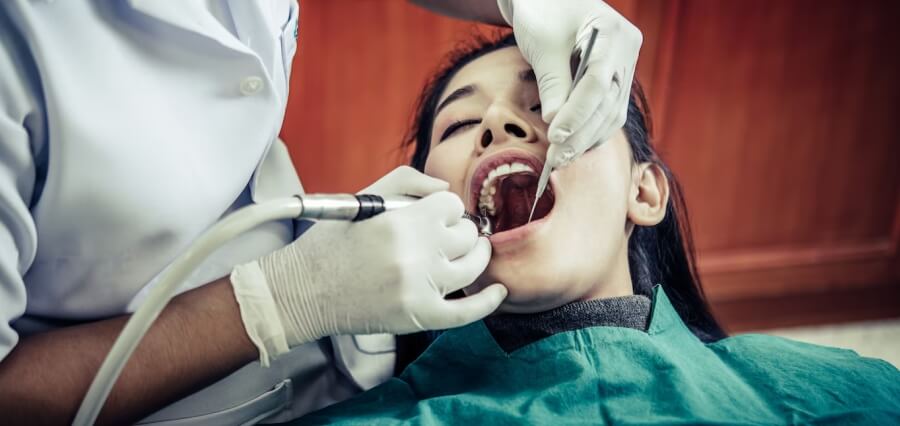Removing wisdom teeth can be really painful, so speeding up recovery is key to feeling better. Knowing what to do after the surgery helps a lot. Check on wisdom teeth removal from Bella Vista Dental Care to get more accurate information.
Indications for Wisdom Teeth Removal
Crowding Damage
Wisdom teeth often cause visible crowding. They push against other teeth, causing discomfort and misalignment. This can lead to difficulty in cleaning the affected area, increasing the risk of cavities and gum disease.
The pressure from emerging wisdom teeth can damage adjacent teeth. Sometimes, it cracks or chips them. Early removal prevents such complications.
Persistent Pain
Many people experience persistent pain in the back of their mouth due to wisdom teeth. This is a clear sign they may need removal. The pain often indicates that there isn’t enough space for these teeth to properly emerge.
Infections are common around partially emerged wisdom teeth. These infections can spread and lead to more serious health issues if not addressed promptly through removal.
Cysts Development
Wisdom teeth can lead to the development of cysts or tumors around them. While rare, these conditions require immediate attention as they can destroy jawbone and healthy teeth if left untreated.
The formation of cysts is a severe complication that necessitates surgical intervention. Removing wisdom teeth early helps avoid such risks.
The Wisdom Teeth Removal Procedure
Sedation Options
Local anesthesia numbs the mouth area. It’s best for less complex extractions. Patients stay awake but feel no pain. IV sedation induces a sleep-like state, making the procedure easier for anxious patients. General anesthesia is used in more extensive surgeries, rendering the patient completely unconscious. Consents are taken from patients before proceeding with this par.
Tooth Extraction Process
The tooth extraction process begins once sedation takes effect. The surgeon makes an incision in the gum to expose the tooth and bone.
Next, any bone-blocking access to the tooth root is removed. Sometimes, the tooth is divided into sections for easier removal. Once freed, it’s carefully extracted from its socket.
Post-Operative Care
Immediately after surgery, post-operative care instructions are crucial for recovery. Patients receive guidance on:
Managing bleeding with gauze pads.
Reducing swelling using ice packs.
Eating soft foods and avoiding straws to prevent dry sockets.
Pain management often involves prescribed or over-the-counter medications as recommended by your surgeon.
Choosing an Oral Surgeon
Surgeon Credentials
When selecting an oral surgeon, board certification is crucial. This ensures they have met specific education and training standards. Look for surgeons with a history of successful wisdom teeth extractions.
Experience matters. An experienced surgeon can handle complications better. They know how to manage unexpected issues during surgery.
Patient Comfort
Patient comfort goes beyond anesthesia. It includes how the staff treats you and the information provided about recovery and aftercare.
Research & Referrals
Always check online reviews before making a decision. They give insight into other people’s experiences with the surgeon.
Ask family or friends for referrals if they’ve had similar procedures done successfully. Your dentist can also recommend trusted surgeons they work closely with.
Recovery Timeline
Initial 24 Hours
The first day after wisdom teeth removal is crucial. Managing bleeding and swelling are top priorities. Patients can expect some blood for the first few hours. Applying pressure with gauze helps control it.
Swelling peaks within 48 hours. Ice packs reduce swelling effectively. Use them in 20-minute intervals.
First Week
During this period, pain management is essential. Pain varies from person to person but is manageable with medication prescribed by the dentist or surgeon.
Monitoring for signs of infection is also critical. Symptoms include fever, increased pain, and unusual discharge from the extraction site. Contact your healthcare provider if you notice these signs.
Long-Term Healing
Complete recovery takes about 2–3 weeks on average. Most people can return to their normal activities within a week, though strenuous activity should wait until full healing occurs.
To aid recovery:
Eat soft foods.
Avoid using straws.
Practice good oral hygiene carefully around the surgery sites.
Oral Hygiene and Wound Care
Gentle Rinsing
After wisdom teeth removal, gentle rinsing is crucial. Use warm water mixed with salt to rinse your mouth several times a day. This helps in promoting healing by reducing swelling and cleaning the area gently.
Do not rinse too vigorously. It might disturb the gum tissue around the wound. Start this practice 24 hours after surgery for best results.
Avoid Brushing
Initially, avoid brushing directly on the extraction sites. This prevents irritation and potential harm to sensitive gum tissues recovering from surgery.
You can resume normal brushing of your other teeth but be gentle around the surgical areas. Use a soft brush to minimize discomfort and protect healing gums.
Follow all prescribed antibiotic regimens without skipping doses.
Follow-Up Appointments
Progress Check
After wisdom teeth removal, follow-up appointments are crucial. They let your dentist or surgeon assess healing. Missing these appointments can lead to unnoticed complications.
During these visits, professionals check for proper healing. They also ensure that blood clots have formed correctly in the extraction sites. These clots are vital for healing.
Spotting Trouble
Knowing when to seek help is key after surgery. Watch for symptoms of complications like infections or a painful condition known as a dry socket.
Common signs include:
Severe pain not relieved by prescribed tablets
Excessive bleeding beyond the first 24 hours
Swelling that worsens instead of improving
Bad taste or smell coming from the extraction site
Fever indicating possible infection
If you notice any of these, contact your dental office immediately.
Regular visits to the dentist to monitor your wisdom teeth condition can help prevent difficulties in the future. Make it a habit to see your dentist and have healthier oral care.
Read More: Click Here















